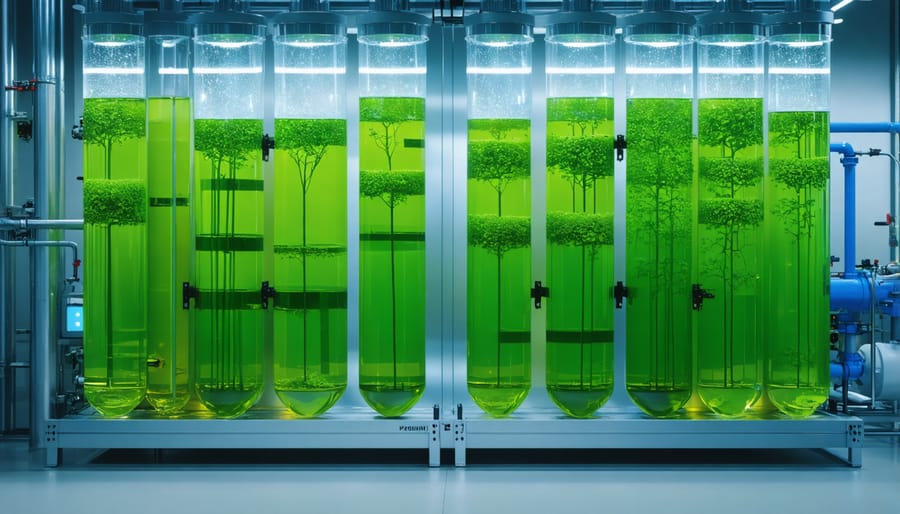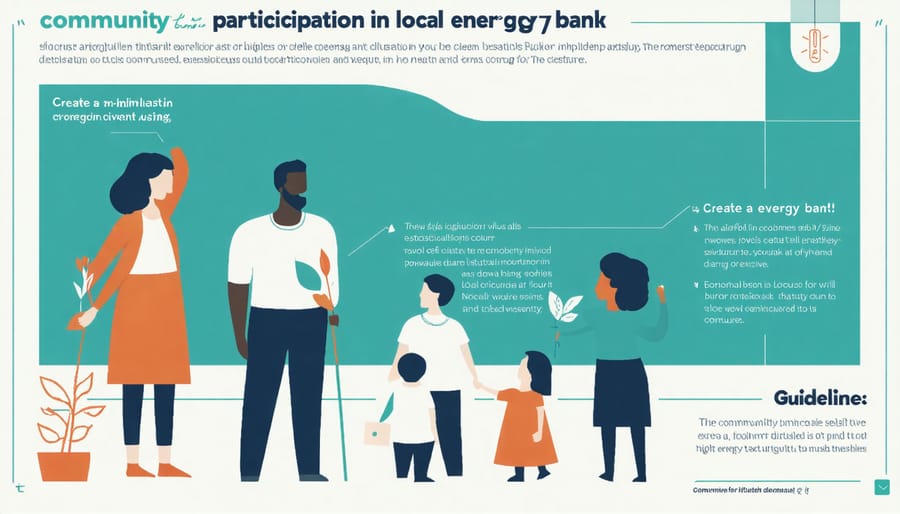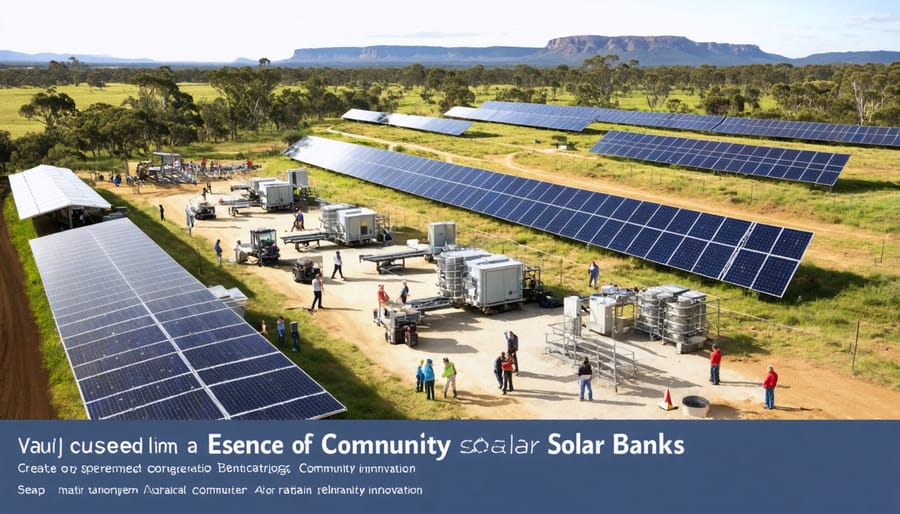Transform your community’s energy landscape with organic energy solutions that harness nature’s power while building local resilience. By integrating biogas digesters, solar thermal systems, and biomass conversion technologies, Australian communities are pioneering a sustainable energy revolution that’s both environmentally responsible and economically viable.
From Byron Bay’s innovative waste-to-energy programs to Melbourne’s community-owned solar gardens, our nation’s transition to organic power sources demonstrates how natural processes can reliably fuel our future. These solutions not only reduce carbon emissions but also create local jobs, strengthen community bonds, and provide energy independence during challenging times.
The urgency of climate change demands immediate action, yet the path forward is clear and achievable. By combining traditional Indigenous land management practices with cutting-edge biotechnology, we’re discovering powerful new ways to generate clean energy from organic materials while preserving our unique Australian ecosystems. Whether you’re a local council member, business owner, or concerned citizen, implementing these solutions starts with understanding the remarkable potential of organic energy systems to transform how we power our communities.
Natural Energy Storage Systems That Work

Biomass Energy Banks
Communities across Australia are discovering innovative ways to store energy using locally available biomass resources, creating sustainable energy banks that serve as reliable power reserves. These organic energy storage systems work by converting plant matter, agricultural waste, and other biological materials into storable forms of energy that can be accessed when needed.
Think of biomass energy banks as nature’s batteries. When surplus organic matter is collected and properly processed, it can be stored for extended periods without losing its energy potential. This stored energy can then be released through various conversion methods, such as anaerobic digestion or gasification, providing communities with a steady power supply during peak demand or when other renewable sources are less available.
Local councils and farming communities are leading the way in establishing these organic power reserves. For instance, the Byron Bay region has successfully implemented a community-scale biomass storage facility that processes sugar cane waste and other agricultural residues, creating a reliable energy backup system for the local grid.
To establish an effective biomass energy bank, communities need to identify their available organic resources, implement efficient collection systems, and invest in appropriate conversion technologies. Many regional areas are now partnering with agricultural businesses to create closed-loop systems where waste products become valuable energy assets.
The beauty of biomass energy banks lies in their dual benefit: they help manage organic waste while providing a sustainable energy solution that can be scaled to meet community needs.
Living Battery Systems
Nature has been perfecting energy storage solutions for billions of years, and scientists are now harnessing these biological processes to create innovative power systems. One of the most promising developments comes from algae-based systems, which can both generate and store energy through photosynthesis. These living powerhouses convert sunlight into chemical energy, storing it naturally and releasing it when needed.
In Australia, researchers at the University of Technology Sydney have made significant strides with bacterial batteries, using specially engineered microorganisms that can generate electricity while cleaning wastewater. These microscopic powerplants create a win-win situation: providing sustainable energy storage while performing valuable environmental services.
Living battery systems represent a perfect blend of nature and technology. Unlike traditional batteries, these biological solutions are self-repairing, environmentally friendly, and potentially endless in their lifecycle. Communities in Queensland are already testing these systems in pilot programs, combining them with existing solar installations to create more resilient local power networks.
The beauty of living battery systems lies in their adaptability. They can be scaled from small household units to large community installations, and they actually become more efficient over time as the biological components grow and multiply. For many coastal communities, these solutions offer a practical path to energy independence while supporting local marine ecosystems.

Community Power Sharing Success Stories
The Byron Bay Bioenergy Hub
The Byron Bay Bioenergy Hub stands as a shining example of successful community-led energy initiatives in Australia. Launched in 2019, this innovative project transforms organic waste from local farms and food businesses into clean, renewable energy that powers over 1,500 homes in the region.
At the heart of the hub lies a state-of-the-art anaerobic digestion facility, which processes approximately 20,000 tonnes of organic waste annually. Local farmers contribute agricultural residues, while restaurants and cafes provide food waste, creating a circular economy that benefits the entire community.
The hub’s success stems from its strong community engagement approach. Regular workshops and open days help residents understand the bioenergy process, while partnerships with local schools foster environmental awareness among younger generations. The project has created 15 permanent jobs and significantly reduced the region’s carbon footprint.
What sets the Byron Bay Bioenergy Hub apart is its innovative storage solution. The facility uses a unique biogas storage system that allows energy to be released when demand peaks, providing a reliable power source even during periods of high consumption. This has proven particularly valuable during tourist seasons when the region’s energy needs surge.
The financial benefits have been substantial, with participating businesses saving up to 30% on waste management costs and local households enjoying more stable energy prices. The hub has become a model for other Australian communities, demonstrating how organic waste can be transformed from an environmental challenge into a valuable energy resource.
The project’s success has sparked interest from communities across the country, with several regions now developing similar initiatives based on the Byron Bay blueprint.
Rural Victoria’s Agricultural Energy Network
In the heart of Victoria’s farming belt, an innovative community-led initiative has transformed how agricultural businesses approach energy storage and sharing. The Goulburn Valley Organic Energy Network, established in 2019, demonstrates how rural communities can harness organic waste to create sustainable energy solutions.
The network connects twelve farms across a 50-kilometer radius, each contributing different types of organic materials to a central biodigester facility. Dairy farms provide manure, orchards contribute pruning waste and damaged fruit, and crop farmers add crop residues and straw. This diverse organic matter feeds into a sophisticated anaerobic digestion system that produces biogas for electricity generation and storage.
What makes this network particularly successful is its collaborative approach to energy distribution. During peak harvest seasons, farms with higher energy demands can draw more power from the shared storage system, while those in off-peak periods contribute excess energy back to the network. This flexibility has resulted in a 40% reduction in electricity costs for participating farms and created a more resilient local energy grid.
The network also implements innovative storage solutions, including organic battery systems that use natural compounds derived from agricultural waste. These storage units, housed in repurposed shipping containers, provide backup power during extreme weather events and help balance peak load demands.
The success of this initiative has inspired similar projects across regional Victoria, with three new networks currently under development. Local farmers report not only financial benefits but also improved soil health from the return of processed organic matter to their fields, creating a truly circular energy economy.
Setting Up Your Community Energy Bank
Resource Assessment and Planning
Successful organic energy implementation starts with a thorough assessment of available resources in your local area. Begin by mapping out potential organic waste streams, including agricultural residues, food waste from restaurants and markets, and green waste from parks and gardens. Consider seasonal variations in resource availability to ensure a steady supply throughout the year.
When evaluating your location’s energy storage potential, factor in space requirements, existing infrastructure, and proximity to power grid connections. A comprehensive site analysis should include soil testing, water availability, and local climate patterns that might affect biogas production or other organic energy processes.
Create an inventory of community assets, including available land, equipment, and skilled personnel. Consider partnering with local farms, food processing facilities, or waste management companies to secure a reliable feedstock supply. Remember that successful organic energy projects often thrive on strong community partnerships.
Develop a detailed timeline for implementation, factoring in planning permits, construction phases, and commissioning periods. Financial planning should account for initial setup costs, operational expenses, and potential revenue streams from energy sales or waste management services.
Don’t forget to assess the social impact of your project. Engage with local stakeholders early in the planning process, address concerns proactively, and highlight the benefits of organic energy solutions for the community, such as reduced waste, lower energy costs, and improved environmental outcomes.

Building Community Support
Building community support for organic energy solutions requires a grassroots approach that celebrates local involvement and shared benefits. Success stories from regions like Byron Bay and the Sunshine Coast demonstrate how community engagement can drive sustainable energy initiatives forward.
Start by forming a local action group that brings together diverse stakeholders – from farmers with biomass resources to local business owners and residents. Host regular community forums where experts can explain the benefits of organic energy solutions in plain language, addressing concerns and highlighting opportunities for participation.
Educational workshops have proven particularly effective in Australian communities. These hands-on sessions can demonstrate practical applications, such as how food waste can be converted into biogas or how agricultural residues become valuable energy resources. Schools often serve as excellent starting points for community education, with students becoming enthusiastic advocates for sustainable practices at home.
Creating a community benefits scheme is crucial for securing long-term support. This might include offering residents reduced energy costs, establishing a community investment program, or creating local jobs through the initiative. The Central Victorian town of Daylesford, for instance, saw tremendous community buy-in when they implemented a profit-sharing model for their renewable energy project.
Social media and local newsletters play vital roles in maintaining momentum and transparency. Regular updates about project milestones, community achievements, and environmental impacts help maintain engagement and attract new supporters to the cause.
Implementation and Maintenance
Setting up a community organic energy storage system requires careful planning and ongoing commitment. Begin by conducting a thorough site assessment to determine the optimal location for your storage facilities, considering factors like accessibility, safety requirements, and proximity to energy sources.
Start with a pilot project involving a small number of households or businesses to test the system’s effectiveness. Install monitoring equipment to track energy production, consumption, and storage patterns. This data will help optimize the system’s performance and demonstrate its benefits to the broader community.
Community engagement is crucial for success. Organize regular workshops and information sessions to educate participants about system operation and benefits. Establish a local committee to oversee operations and make decisions about system expansion and improvements.
For long-term success, implement a robust maintenance schedule. Maintaining energy storage systems involves regular inspections, cleaning, and performance checks. Create a maintenance roster where community members can share responsibilities, fostering a sense of ownership and reducing operational costs.
Document all procedures and create emergency response protocols. Partner with local renewable energy experts for technical support and training. Regular system upgrades and modifications based on performance data and community feedback will ensure the system remains efficient and meets evolving needs.
Remember to celebrate milestones and share success stories with the broader community, inspiring others to join the sustainable energy movement.
Future Growth and Benefits
The future of organic energy solutions in Australia looks remarkably promising, with communities across the country poised to benefit from advancing technologies and growing awareness. As we look ahead, experts predict a significant shift towards integrated community-based storage systems that combine organic energy solutions with smart grid technologies.
One of the most exciting developments is the emergence of bio-hybrid storage systems, which are expected to revolutionize how communities store and utilize renewable energy. These systems will combine traditional organic materials with cutting-edge biotechnology, potentially increasing storage capacity by up to 40% while reducing maintenance costs.
The benefits extend far beyond just energy storage. Communities implementing these solutions can expect to see substantial economic advantages, including reduced energy costs, increased energy independence, and new job opportunities in the growing green energy sector. Rural communities, in particular, stand to gain from these developments, as organic energy solutions can turn agricultural waste into valuable energy resources.
Environmental benefits will continue to multiply as these systems evolve. Next-generation organic storage solutions are expected to achieve near-zero waste status, creating a truly circular energy economy. This advancement will help communities significantly reduce their carbon footprint while maintaining reliable energy access.
Looking towards 2030 and beyond, we can anticipate the integration of artificial intelligence to optimize organic energy storage systems, making them more efficient and responsive to community needs. These smart systems will be able to predict usage patterns, manage energy distribution more effectively, and automatically adjust to changing environmental conditions.
The future also holds promise for smaller-scale applications, making organic energy storage more accessible to individual households and small businesses. This democratization of energy storage will empower more Australians to participate in the renewable energy revolution, creating more resilient and sustainable communities nationwide.
As we’ve explored throughout this article, organic energy solutions represent a vital pathway toward a more sustainable future for Australia. The integration of bioenergy, community-based power systems, and innovative storage solutions offers tremendous potential for reducing our carbon footprint while strengthening local economies.
The success stories we’ve shared, from regional farming communities harnessing agricultural waste to urban centers implementing cutting-edge biogas systems, demonstrate that sustainable energy solutions are not just theoretical possibilities but practical realities. These achievements show what’s possible when communities come together with a shared vision for a cleaner future.
Now is the time for action. Whether you’re a community leader, business owner, or concerned citizen, there are numerous ways to get involved. Start by connecting with local sustainability groups, attending community energy forums, or initiating discussions about renewable energy projects in your area. Consider joining or establishing a community energy cooperative, where collective action can drive meaningful change.
Remember, every step toward organic energy adoption, no matter how small, contributes to a larger movement toward sustainability. Together, we can create a greener, more resilient Australia for future generations. Let’s turn these possibilities into reality.

